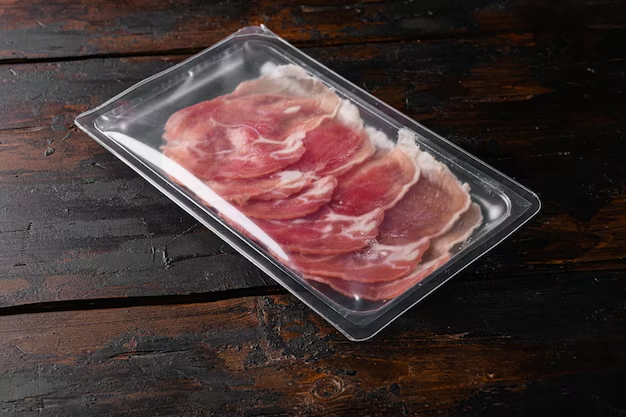How Long Can You Keep Salami Fresh in the Fridge?
Salami is a beloved staple in many kitchens worldwide. Whether you’re preparing an antipasto platter, crafting a gourmet sandwich, or simply enjoying it as a snack, salami's rich flavor and satisfying texture make it a go-to choice. But once you’ve opened that package, how long can you reasonably expect it to last in your refrigerator? This guide will explore everything you need to know about storing salami effectively, ensuring both safety and quality with each bite.
Understanding Salami: What Makes It Different?
Salami is a cured sausage consisting mainly of fermented and air-dried meat, typically pork. Here’s a glance at what sets it apart from other meats in terms of storage:
- Curing Process: Salami is preserved through fermentation and drying, which significantly reduces moisture content and prevents spoilage.
- Flavor Development: The aging process enhances salami's deep, savory flavors, a characteristic appreciated by culinary enthusiasts.
- Durability: Its curing process gives salami a longer shelf life than fresh meat, but it still requires proper storage to maintain quality.
Shelf Life of Salami in the Refrigerator
Unopened Salami
Unopened, vacuum-sealed salami can remain fresh in the refrigerator for several months. The exact time might vary depending on the manufacturer's guidelines, so it’s vital to check packaging recommendations.
Opened Salami
Once opened, salami doesn't last as long and needs careful handling to stay fresh:
- Whole Salami: If you’ve invested in a whole salami, it can last three to six weeks in the refrigerator if stored correctly.
- Sliced Salami: Pre-sliced salami has a shorter life span. Once opened, aim to consume it within a week, as its exposure to air expedites spoilage.
Proper Storage Techniques for Salami
Keeping Salami Fresh: Storage Tips
- Wrap It Right: After opening, wrap salami tightly in parchment paper or foil, which allows it to breathe and prevents drying.
- Use Airtight Containers: Store salami in airtight containers to further protect it from air exposure and moisture.
- Refrigeration: Always store salami in the coolest part of your refrigerator, which helps maintain an optimal texture and flavor.
- Avoid Cross-contamination: Keep salami away from raw meats and strongly odorous foods to prevent flavor and odor transfer.
Signs That Salami Has Spoiled
Recognizing the signs of spoilage ensures you’re eating salami at its best. Here’s what to look for:
- Off Smell: Salami should smell slightly tangy due to fermentation. A sour or rotten smell is a red flag.
- Mold: While some mold on the casing is natural and safe to eat when wiped off, colored molds or excessive mold on the slices indicate spoilage.
- Texture Changes: Sliminess or a tacky feel is a sign your salami might be past its prime.
📋 Quick Storage Summary
- Unopened Salami: Keep in the fridge for up to several months.
- Opened Whole Salami: Wrap tightly and store for 3-6 weeks.
- Opened Sliced Salami: Consume within a week; store in airtight containers.
- Signs of Spoilage: Smell, color, and texture changes are key indicators.
Extending Salami Shelf Life: Freezing and Thawing
While it’s generally recommended to enjoy salami fresh for the best flavor, freezing can be an option if you have more than you can consume in time.
Freezing Salami
- How to Freeze: Wrap salami tightly in plastic wrap, followed by a layer of foil. You can also use vacuum-sealed bags for added protection.
- Duration: Frozen salami can last several months, maintaining its safety and flavor.
Thawing Salami
To thaw, transfer the salami to the refrigerator and allow it to defrost slowly. This gradual process helps maintain its texture and taste. Once thawed, use it within a few days.
Related Storage Insights: Comparing Salami with Other Cured Meats
These pointers highlight how salami compares with other cured meats in storage:
Prosciutto
Unlike salami, prosciutto is a dry-cured ham that is typically sliced very thin and best consumed shortly after opening. Once opened, it should be wrapped in wax paper and eaten within a few days.
Chorizo
Chorizo, a spiced sausage, can be either fresh or cured. Cured chorizo, like salami, has a longer shelf life, while fresh chorizo requires prompt cooking and refrigeration like any fresh sausage.
Pepperoni
Pepperoni, often used as a pizza topping, is similar to salami in its curing process and storage techniques. Once opened, it should be tightly wrapped and used within a few weeks.
Practical Tips for Enjoying Salami
Creative Ways to Use Salami
With salami on hand, your culinary options are almost endless. Here are some tasty ideas:
- Charcuterie Boards: Pair salami with cheeses, olives, and nuts for an impressive appetizer.
- Sandwiches: Thinly slice for a classic sandwich paired with cheese, tomatoes, and arugula.
- Pizza Topping: Add slices to a homemade pizza for a spicy, savory kick.
- Pasta Dishes: Incorporate diced salami into pasta for extra flavor.
🧀 Cheese & Salami Pairings
- Mild Cheeses: Mozzarella or provolone complement salami without overpowering it.
- Bold Cheeses: Aged cheddars or gorgonzola provide a robust taste contrast.
Closing Insights: Enjoy Salami Safely and Deliciously
Salami’s appeal lies in its complex flavors and versatility. By understanding its storage needs and incorporating these best practices, you can savor salami at its optimal freshness. Whether you're crafting a quick snack or an elaborate meal, knowing how to store salami effectively enhances both its taste and your overall culinary experience. Keep these tips in mind to always enjoy salami safely and deliciously!
